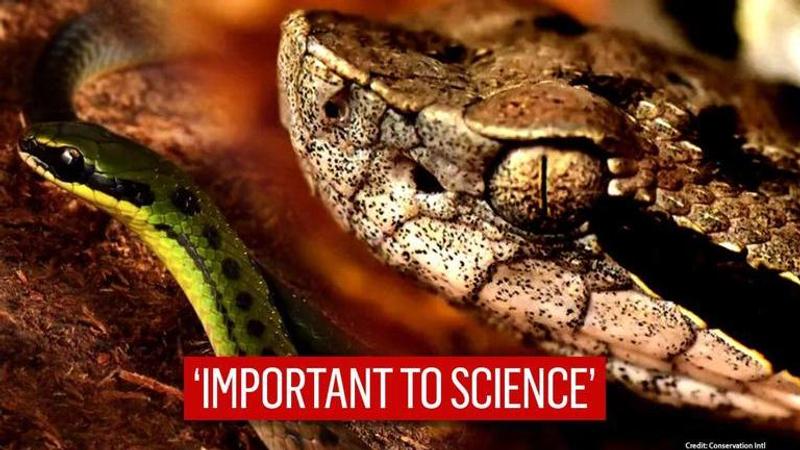Published 15:20 IST, December 15th 2020
Biologists discover 20 new extinct species of wildlife in Bolivia’s ‘cloud forest’
Biologists took an expedition into Bolivian Andes near the Bolivian capital of La Paz, Zongo Valley, and spotted 20 new species of animals and plants.

Biologists have rediscovered scores of species that are rare, endangered, or extinct in the Bolivian ‘Cloud Forests’ including the Andes’ smallest frog and the venomous pit viper. An ecological SWAT team at the Conservation International took an expedition into the Bolivian Andes near the Bolivian capital of La Paz, Zongo Valley, and spotted 20 new species of animals and plants never spotted for several years. Scientists discovered mountain fer-de-lance viper, Bolivian flag snake, lilliputian frog, completely new to science in the cloud forests and four orchid and never previously seen butterflies. According to the release by the non-profit environmental group, the scientists were excited about the rediscovery of Oreobates zongoensis — a “devil-eyed” frog, which had been declared extinct.
In a research that was published on December 14, the group explained that a team of researchers hiked across mountainous rugged terrain approximately 3,000 meters (10,000 feet) above sea level. And it was, in fact, in the “heart of the forest” that they discovered several flora and fauna species never seen for decades. The expedition, co-led by Trond Larsen was a part of the Conservation International’s Rapid Assessment Program which aims to assess the health of ecosystems worldwide. The expedition was co-joined by Eduardo Forno, who leads Conservation International’s work in Bolivia.
“We identified a total of 1,204 species in the Zongo Valley, 20 of which were completely new to science,” Larson said in the release.
[The “Devil-Eyed” Frog. Credit: Conservation International]
[New Species of metalmark butterfly (Setabis SP) discovered in Zongo rap. Credit: Conservation International]
“We identified a butterfly that had not been seen for nearly a century,” Forno added. According to the scientists, more than 80 percent of Bolivia lies within the Amazon basin, and Zongo Valley comprises some of the rare wildlife and plant species. A team of 17 Bolivian and international scientists documented the biodiversity, including the mammals, including night monkeys, and threatened dwarf brocket deer.
[Adian mountains of Zongo Valley. Credit: Conservation International]
Threats in the valley
Scientist Forno informed that the biggest threat to the wildlife in the valley is the water and agriculture requirement of the rural communities that elevates the risks of overexploitation. “Some of the biggest threats facing the Zongo Valley are the fires that are set to clear land for small-scale farming,” he added. The rural settlements’ requirements have the potential to destroy wildlife habitats and disrupt water sources, Forno explained.
Updated 15:19 IST, December 15th 2020







